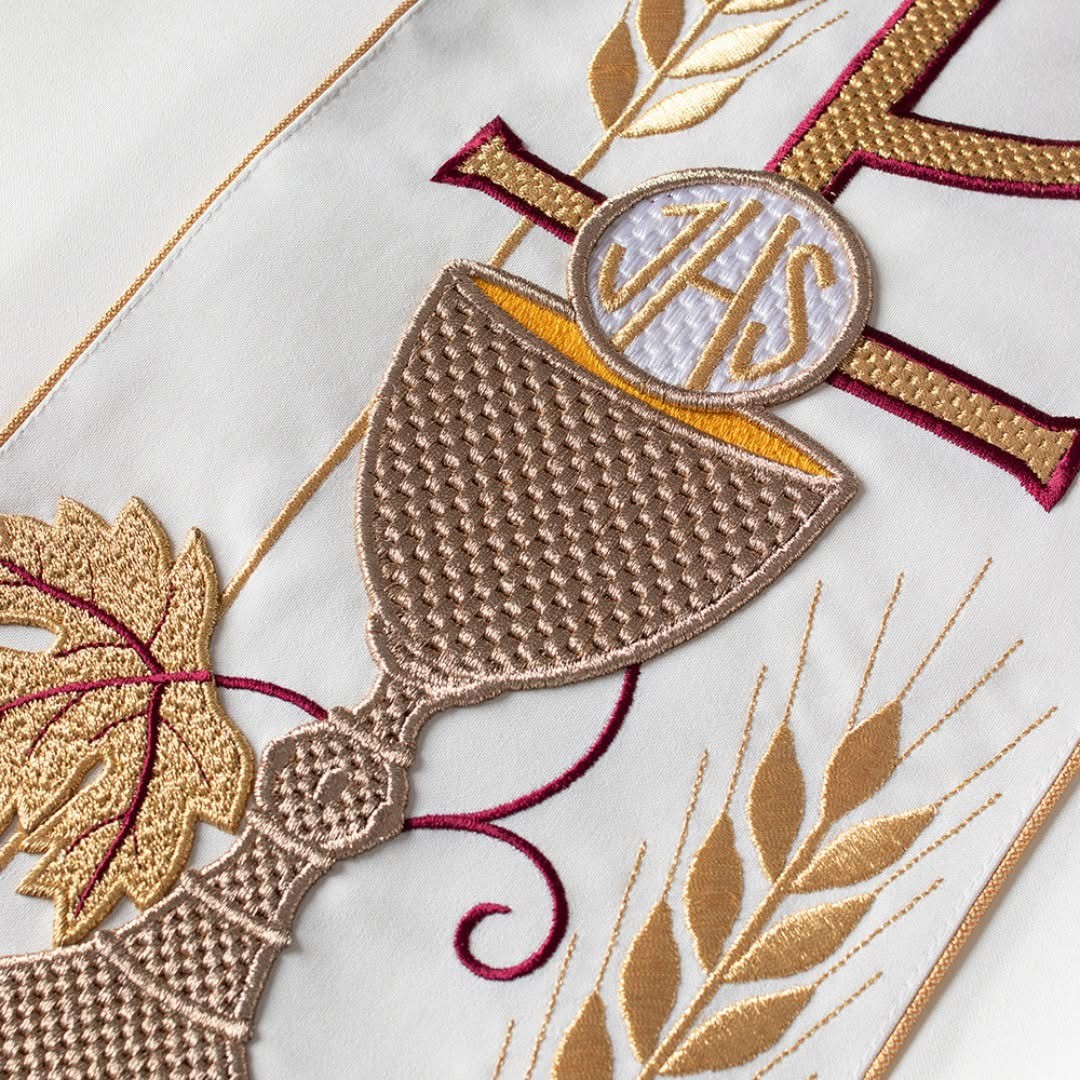The Assumption of the Blessed Virgin Mary is one of the most important Marian feasts in the Catholic liturgical calendar. Celebrated on August 15th, it commemorates Mary's ascent into heaven, body and soul, at the end of her earthly life. This solemnity is a moment of profound joy and reflection for the faithful, who unite in prayer and celebration of Mary's glory, a model of faith and hope for all humanity. In this context, liturgical vestments take on a particular significance, helping to create an atmosphere of sacredness and solemnity during the celebrations.
The Theological Significance of the Assumption
The Assumption of Mary is a dogma of faith proclaimed by Pope Pius XII in 1950, with the apostolic constitution Munificentissimus Deus. This dogma affirms that Mary, after completing the course of her earthly life, was assumed into heaven in body and soul. The Assumption is a unique privilege granted to Mary, due to her Immaculate Conception and her special relationship with God. Mary, being the Mother of God, was preserved from the corruption of sin and death, and therefore was elevated to heavenly glory.
The Assumption is also a sign of hope for all believers. It foreshadows the resurrection of bodies at the end of time and our future participation in heavenly glory. Mary, assumed into heaven, intercedes for us before God and guides us on our journey of faith. Her Assumption is an invitation to live a holy life and to orient our hearts towards heaven.
The Liturgical Color of the Day of the Assumption
The liturgical color used for the feast of the Assumption is white. White is the color of purity, joy, and glory. It symbolizes Mary's holiness and her victory over death and sin. The use of white in liturgical vestments helps to create an atmosphere of celebration and solemnity during the celebrations. In some traditions, the color blue, associated with the Madonna, may also be used.
Liturgical Vestments for the Celebration of the Assumption
The liturgical vestments worn during the celebration of the Assumption are carefully chosen to reflect the solemnity and joy of this feast. They are made of precious fabrics and decorated with embroidery and symbols that recall the figure of Mary and the mystery of the Assumption. Here are some of the most common liturgical vestments used on this occasion:
The Cope
The cope is a wide mantle worn by the priest during processions and solemn celebrations. For the Assumption, the cope is generally white or blue, made of silk or brocade. It can be decorated with gold or silver embroidery representing images of Mary, angels, or Marian symbols such as the lily, the star, or the crown.
The Chasuble
The chasuble is the main vestment worn by the priest during the Eucharistic celebration. For the Assumption, the chasuble is white and can be made of different fabrics, such as silk, linen, or brocade. The chasuble can be decorated with embroidery representing scenes of the Assumption, such as Mary assumed into heaven by angels, or with Marian symbols. Some chasubles also feature applications of precious stones or pearls.
The Stole
The stole is a strip of fabric worn by the priest around the neck, descending in front. The stole is white and can be made of the same fabric as the chasuble. It is decorated with embroidery or applications that recall the theme of the Assumption. The stole is a distinctive sign of the priestly ministry and symbolizes the divine grace that the priest receives to celebrate the sacraments.
The Dalmatic
The dalmatic is the liturgical vestment worn by the deacon during solemn celebrations. For the Assumption, the dalmatic is white and can be made of silk or brocade. It is decorated with embroidery or applications that recall the figure of Mary and the mystery of the Assumption. The dalmatic symbolizes the deacon's service to the Church and his participation in the liturgy.
The Alb
The alb is a white vestment of linen or cotton worn by all ministers during the liturgical celebration. It symbolizes the purity and holiness necessary to approach the altar of God. The alb is a fundamental element of liturgical clothing and represents the equality of all the baptized before God.
Marian Symbols in Liturgical Vestments
The liturgical vestments for the Assumption are often decorated with Marian symbols that recall the figure of Mary and her role in the history of salvation. Some of the most common symbols include:
- The Lily: A symbol of purity and innocence, attributes that characterize the figure of Mary.
- The Star: A symbol of Mary as a guide and light for believers. The star indicates the way to Christ and illuminates the path of faith.
- The Crown: A symbol of Mary's royalty as Queen of Heaven and Earth. The crown represents her glory and her power of intercession with God.
- The Marian Monogram: Usually composed of the letters "M" and "A", intertwined or superimposed, which represent Mary.
- The Image of the Assumption: Artistic representations of the Assumption of Mary, showing Mary assumed into heaven by angels.
The Importance of Liturgical Vestments in the Celebration of the Assumption
Liturgical vestments are not simple ornaments, but visible signs of faith and devotion. They contribute to creating an atmosphere of sacredness and solemnity during the celebration of the Assumption, helping the faithful to focus on prayer and contemplation of the mystery. The liturgical vestments recall the figure of Mary and her role in the history of salvation, inviting the faithful to imitate her faith and her hope.
Choosing the liturgical vestments for the Assumption is an important task that requires care and attention. It is necessary to choose quality vestments, made of precious fabrics and decorated with significant Marian symbols. The liturgical vestments must be clean and well maintained, to honor the solemnity of the feast and the figure of Mary.
Where to Buy Liturgical Vestments for the Assumption
If you are looking for liturgical vestments for the celebration of the Assumption, we invite you to visit our website HaftinaUSA.com. We offer a wide range of high-quality liturgical vestments, made of precious fabrics and decorated with embroidery and Marian symbols. In our catalog, you will find copes, chasubles, stoles, dalmatics, and albs for all needs. We specialize in the production and sale of sacred vestments and also offer customization services to meet your specific requests.
At HaftinaUSA.com you will also find a wide selection of liturgical accessories, such as chalices, patens, monstrances, and other sacred objects necessary for the Eucharistic celebration. We are a point of reference for parishes, priests, and deacons who wish to purchase high-quality liturgical vestments and accessories for their celebrations.
Conclusion
The feast of the Assumption of the Blessed Virgin Mary is a moment of profound joy and reflection for the faithful. The liturgical vestments, with their white color and their Marian symbols, contribute to creating an atmosphere of sacredness and solemnity during the celebrations. Choosing the liturgical vestments for the Assumption carefully is a way to honor the figure of Mary and to celebrate her Assumption into heaven, an event that fills us with hope and invites us to orient our hearts towards heavenly glory. Visit our website HaftinaUSA.com to discover our collection of liturgical vestments and accessories for the celebration of the Assumption and all other liturgical feasts. Chasubles Haftina USA













